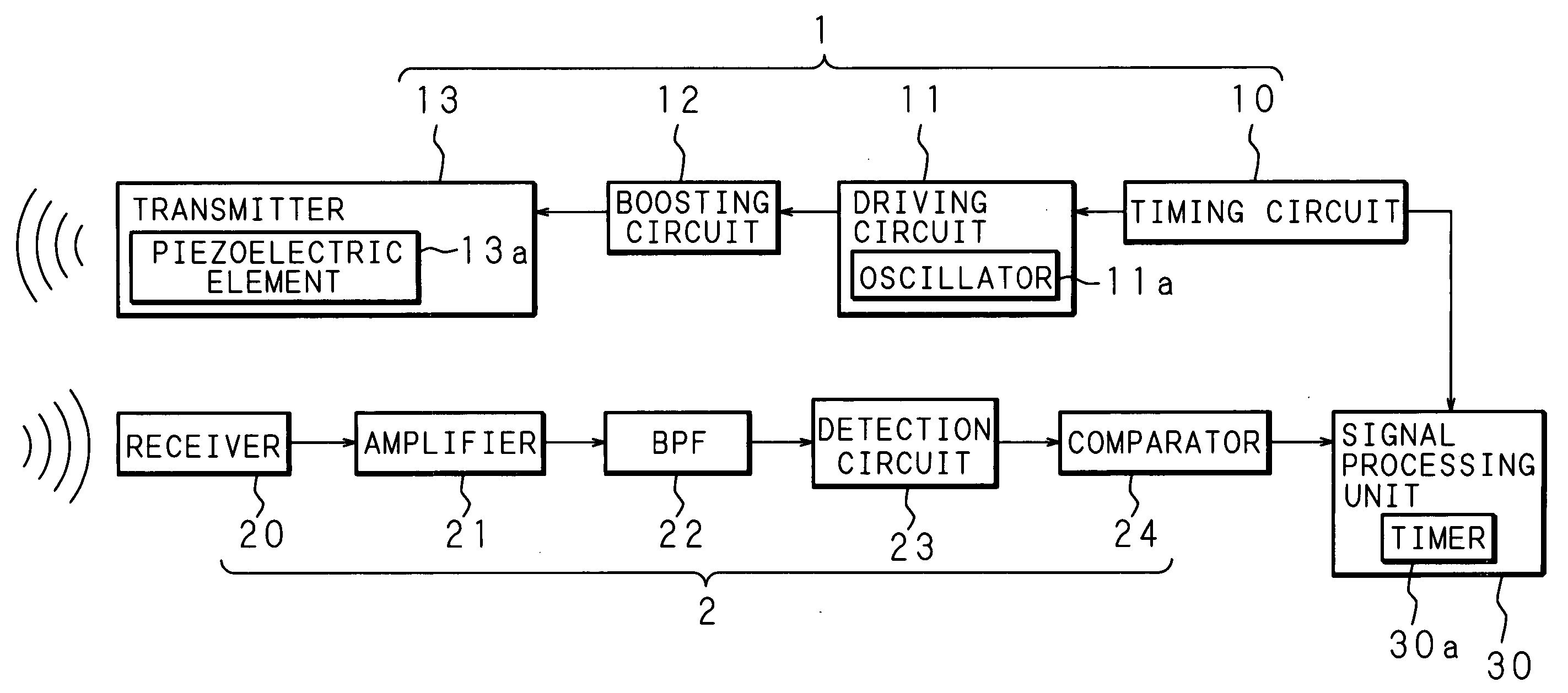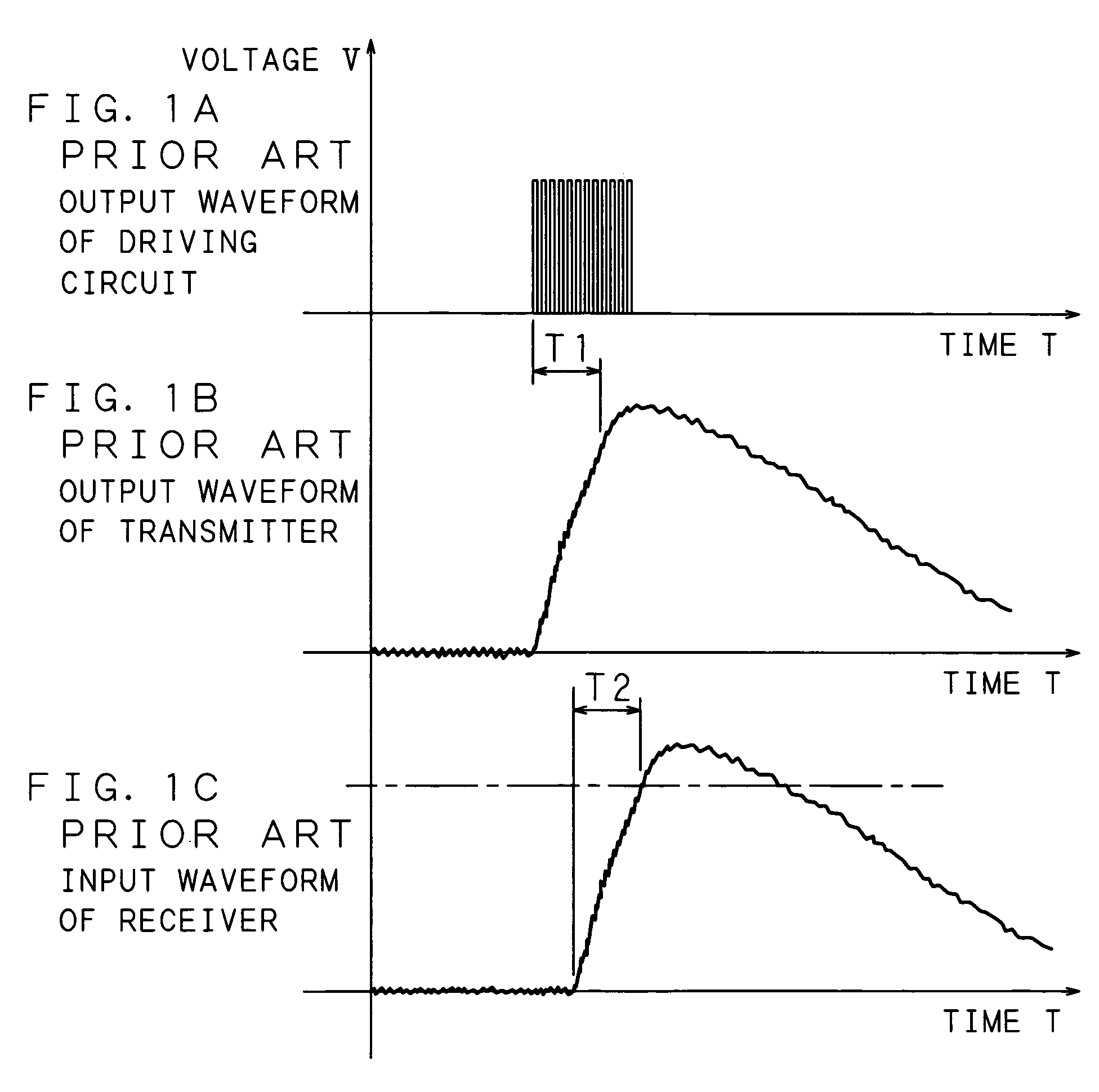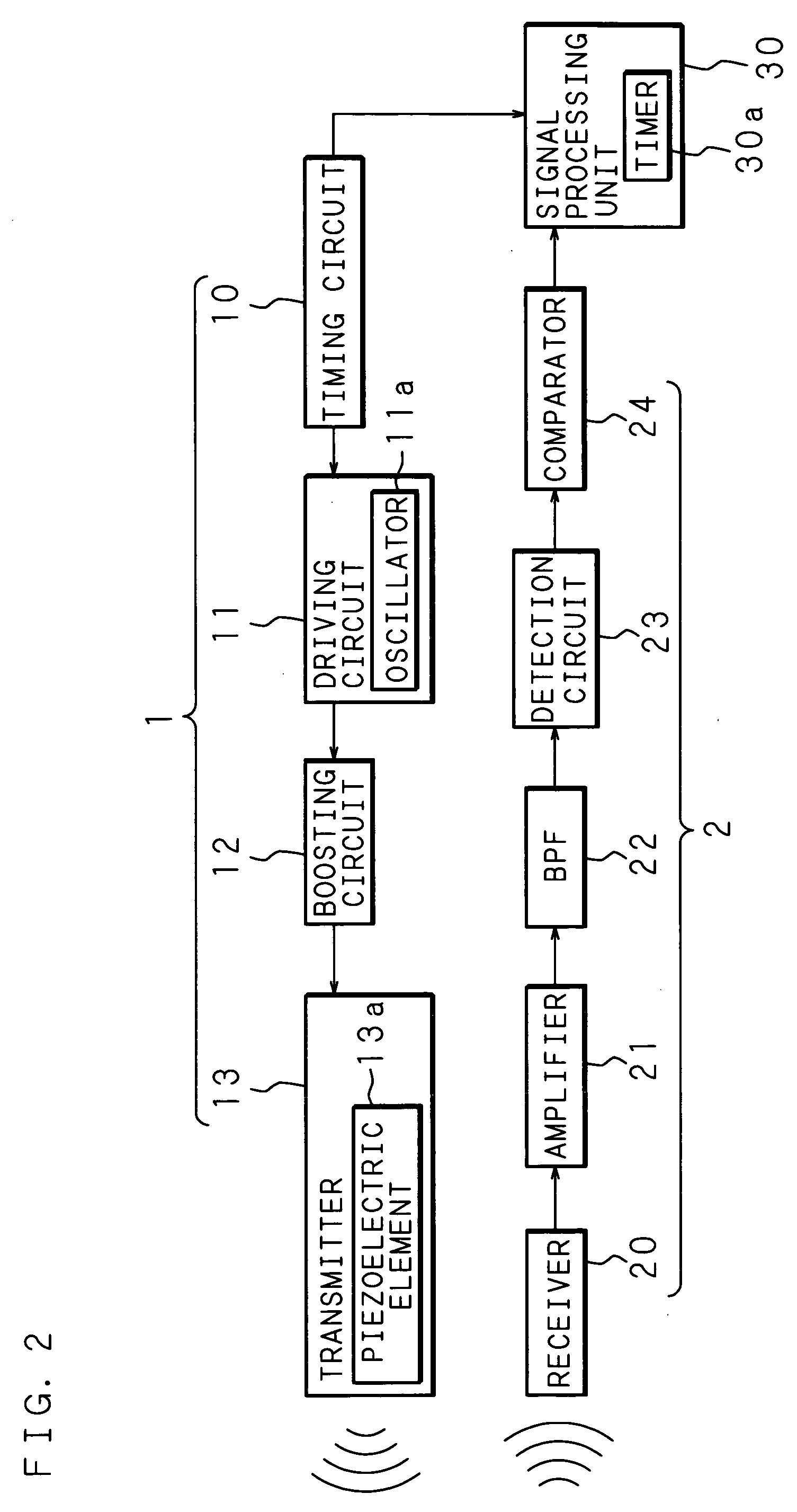Transmitting apparatus, sound sensor and autonomous traveling vehicle
a technology of transmitting apparatus and sound sensor, which is applied in the direction of mechanical vibration separation, instruments, and using reradiation, can solve problems such as unsolved conventional sound sensor problems, and achieve the effect of considerably reducing measurement error
- Summary
- Abstract
- Description
- Claims
- Application Information
AI Technical Summary
Benefits of technology
Problems solved by technology
Method used
Image
Examples
first embodiment
[0036] Detailed description will be given of the invention below on the basis of the accompanying drawings showing preferred embodiments thereof. FIG. 2 is a block diagram showing a schematic configuration of an ultrasonic sensor according to the invention.
[0037] An ultrasonic sensor according to the invention, as shown in FIG. 2, is, roughly speaking, constituted of a transmitting apparatus 1 according to the invention and a receiving apparatus 2 and further includes a signal processing unit 30. Such a ultrasonic sensor according to the invention is basically configured so that an acoustic wave is transmitted from the transmitting apparatus 1, the acoustic wave reflected by a detection-target object is received by the receiving apparatus 2, whereby a distance therefrom to the detection-target object is detected on the basis of an elapsed time until a reception time point from a transmission time point of the acoustic wave.
[0038] The transmitting apparatus 1 comprises a timing circ...
second embodiment
[0052]FIG. 5 is a block diagram showing a schematic configuration of a ultrasonic sensor according to the invention.
[0053] In FIG. 5, numeral 40 denotes a transmitter / receiver, which is equipped with a piezoelectric element 40a. The piezoelectric element 40a is applied with a voltage outputted from a boosting circuit 12 according to an oscillation signal of a frequency “f” outputted from an oscillator 11a of a driving circuit 11. The piezoelectric element 40a vibrates according to the frequency “f” of the applied voltage given from the boosting circuit 12 and transmits an acoustic wave.
[0054] The transmitter / receiver 40 receives an acoustic wave reflected by a detection-target object to generate an electric signal according to the vibration of the piezoelectric element 40a by the action of the received acoustic wave. The generated electric signal is inputted to the detection circuit 23 through an amplifier 21 and a BPF 22 in a similar way to that in the case of the above mentioned ...
PUM
 Login to View More
Login to View More Abstract
Description
Claims
Application Information
 Login to View More
Login to View More - R&D
- Intellectual Property
- Life Sciences
- Materials
- Tech Scout
- Unparalleled Data Quality
- Higher Quality Content
- 60% Fewer Hallucinations
Browse by: Latest US Patents, China's latest patents, Technical Efficacy Thesaurus, Application Domain, Technology Topic, Popular Technical Reports.
© 2025 PatSnap. All rights reserved.Legal|Privacy policy|Modern Slavery Act Transparency Statement|Sitemap|About US| Contact US: help@patsnap.com



